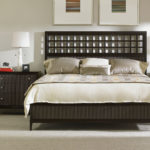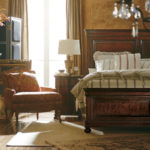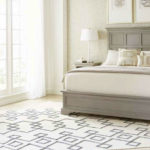When we take on a new client, one of the first questions we ask them is “What is your design style?” Even though it is a broad question, when answered, we can better pursue designing a space for our clients that fits their personality and achieves their dream for the space we are styling. When we ask this question, the answers we get identify what type of design our clients prefer since everyone has their own particular style. Learn about some of the more classic mainstream design styles below to catalog your own preferences and help you make styling choices in the future that best satisfy your soul.
 Contemporary – Contemporary design (sometimes referred to as modern or mid-century modern) is a design style that represents the art and feel of the early to mid 20th century. A representation of the modern art movement and Impressionism, this design style is heavily centered on the use of geometric shapes and strong elements. Centered in clean lines and smooth curves, contemporary furniture usually sits lower to the ground, is boxy in form, and is often made of sleek woods and glossy metals like stainless steel. Architectural and interior styles are minimalist in design with a note to a more natural and simple atmosphere with just a handful of accent pieces. Most often, this design style plays to a more neutral palette marked with fun and quirky pops of color in the furniture and few ornamental pieces. Industrial design sometimes can also fall into this category.
Contemporary – Contemporary design (sometimes referred to as modern or mid-century modern) is a design style that represents the art and feel of the early to mid 20th century. A representation of the modern art movement and Impressionism, this design style is heavily centered on the use of geometric shapes and strong elements. Centered in clean lines and smooth curves, contemporary furniture usually sits lower to the ground, is boxy in form, and is often made of sleek woods and glossy metals like stainless steel. Architectural and interior styles are minimalist in design with a note to a more natural and simple atmosphere with just a handful of accent pieces. Most often, this design style plays to a more neutral palette marked with fun and quirky pops of color in the furniture and few ornamental pieces. Industrial design sometimes can also fall into this category.
 Traditional – As one of the more popular design styles, traditional interior design is influenced by classic 18th century European décor. Known for its elegance, this design style is rooted in deep wood tones, curved fine furniture, rich color palettes and is built with attention to detail. Often seen in this design scheme is the use of winged back chairs, over-sized plush sofas, four poster beds, and claw-foot tubs. Trademarks of traditional design are the use of antique accent and furniture pieces and expensive textiles. Colors often used are deep reds, greens, and golds against a neutral painted backdrop. Architectural use of this classic style is seen in elaborate crown moldings and tile or wood patterned floors, columns and beams throughout a house and the use of arches between rooms and in the ceiling.
Traditional – As one of the more popular design styles, traditional interior design is influenced by classic 18th century European décor. Known for its elegance, this design style is rooted in deep wood tones, curved fine furniture, rich color palettes and is built with attention to detail. Often seen in this design scheme is the use of winged back chairs, over-sized plush sofas, four poster beds, and claw-foot tubs. Trademarks of traditional design are the use of antique accent and furniture pieces and expensive textiles. Colors often used are deep reds, greens, and golds against a neutral painted backdrop. Architectural use of this classic style is seen in elaborate crown moldings and tile or wood patterned floors, columns and beams throughout a house and the use of arches between rooms and in the ceiling.
 Transitional – As a bridge between contemporary and traditional design, transitional interior design focuses on tying modern elements with more classic pieces in furniture and color palettes. A mix between the boxy contemporary furniture and the curved elegant furniture of traditional design, transitional furniture often characterizes both strait and curved lines and uses rich textiles in coordination with the more affordable options. Textures found in transitional homes include jute and rattan mixed with leathers and velveteens. Most types of fabrics can be paired in this design scheme to create an overall cohesive look. Wood is paired with metals and warm neutrals are often seen with both rich and vibrant hues. In this design style, the more masculine look of contemporary or industrial design is paired with the more feminine look of the traditional design styles to create a space that is pleasing to everyone.
Transitional – As a bridge between contemporary and traditional design, transitional interior design focuses on tying modern elements with more classic pieces in furniture and color palettes. A mix between the boxy contemporary furniture and the curved elegant furniture of traditional design, transitional furniture often characterizes both strait and curved lines and uses rich textiles in coordination with the more affordable options. Textures found in transitional homes include jute and rattan mixed with leathers and velveteens. Most types of fabrics can be paired in this design scheme to create an overall cohesive look. Wood is paired with metals and warm neutrals are often seen with both rich and vibrant hues. In this design style, the more masculine look of contemporary or industrial design is paired with the more feminine look of the traditional design styles to create a space that is pleasing to everyone.
 Rustic – Rustic interior design emphasizes the use of raw and natural elements as well as time weathered pieces to create a more relaxed and inviting environment. Centered in the use of organic elements, rustic design often encompasses reclaimed wood with distressed edges, wood beams and stone or wood flooring. Accentuating pieces include homemade or DIY projects, ornaments inspired by nature and flea market finds or heirloom embellishments. Warm and rich colors are often paired with muted neutrals while a spectrum of textures in the upholstered pieces and case goods tie all the elements together. Design styles that fall into this category are often country or cottage inspired as well as Southwestern and Tuscan.
Rustic – Rustic interior design emphasizes the use of raw and natural elements as well as time weathered pieces to create a more relaxed and inviting environment. Centered in the use of organic elements, rustic design often encompasses reclaimed wood with distressed edges, wood beams and stone or wood flooring. Accentuating pieces include homemade or DIY projects, ornaments inspired by nature and flea market finds or heirloom embellishments. Warm and rich colors are often paired with muted neutrals while a spectrum of textures in the upholstered pieces and case goods tie all the elements together. Design styles that fall into this category are often country or cottage inspired as well as Southwestern and Tuscan.
Photos courtesy of Decora Cabinets and Stanley Furniture